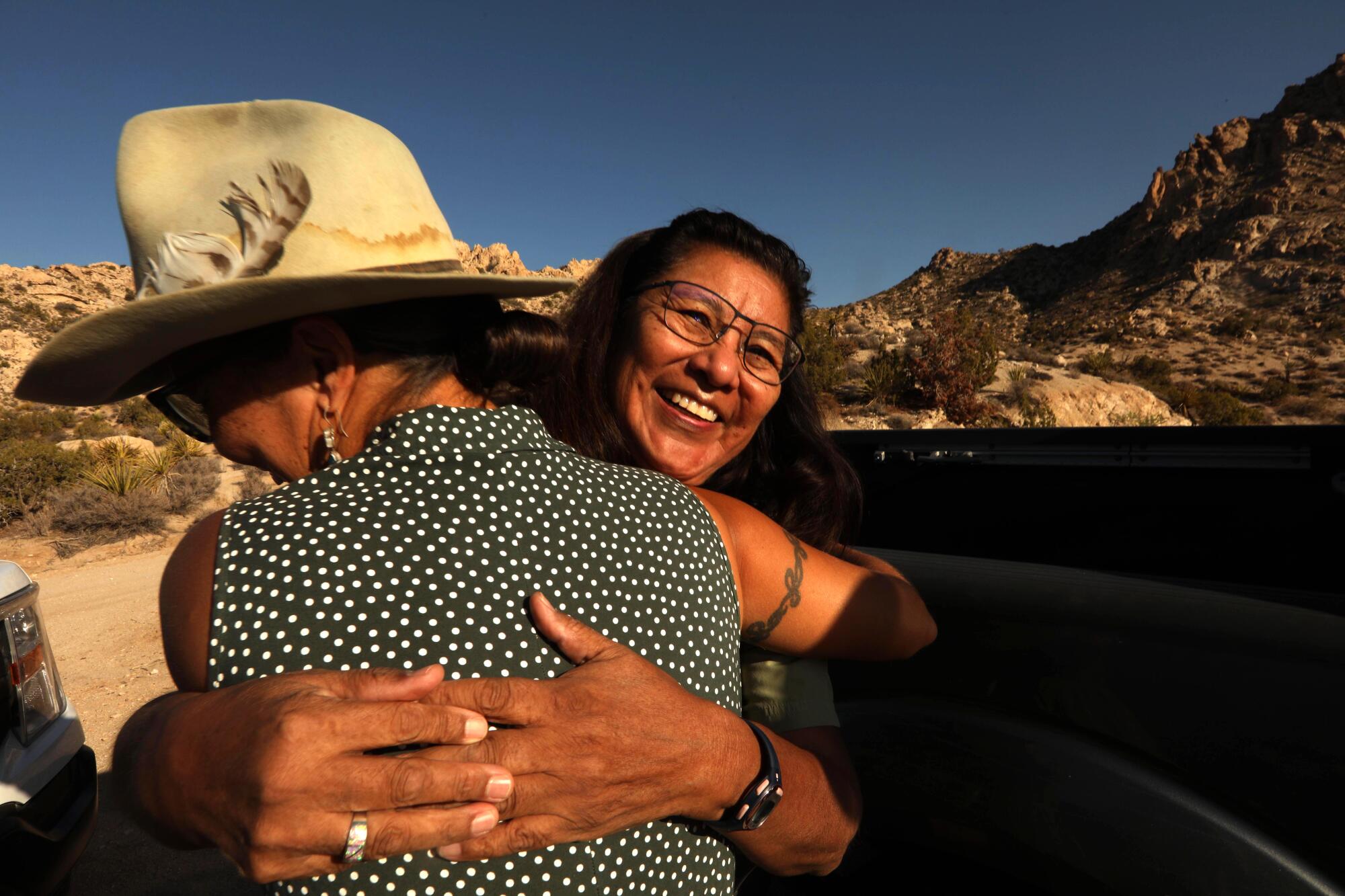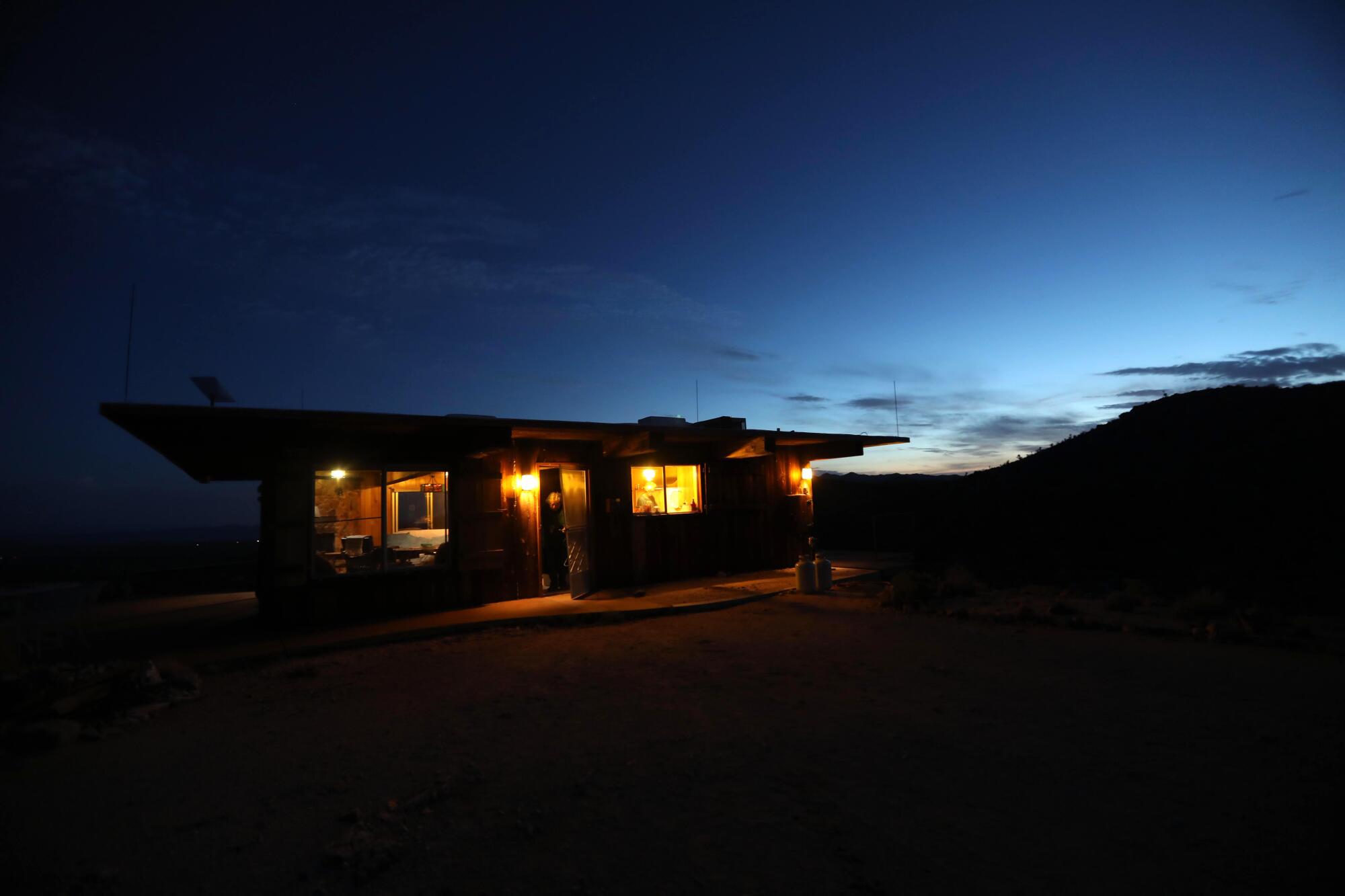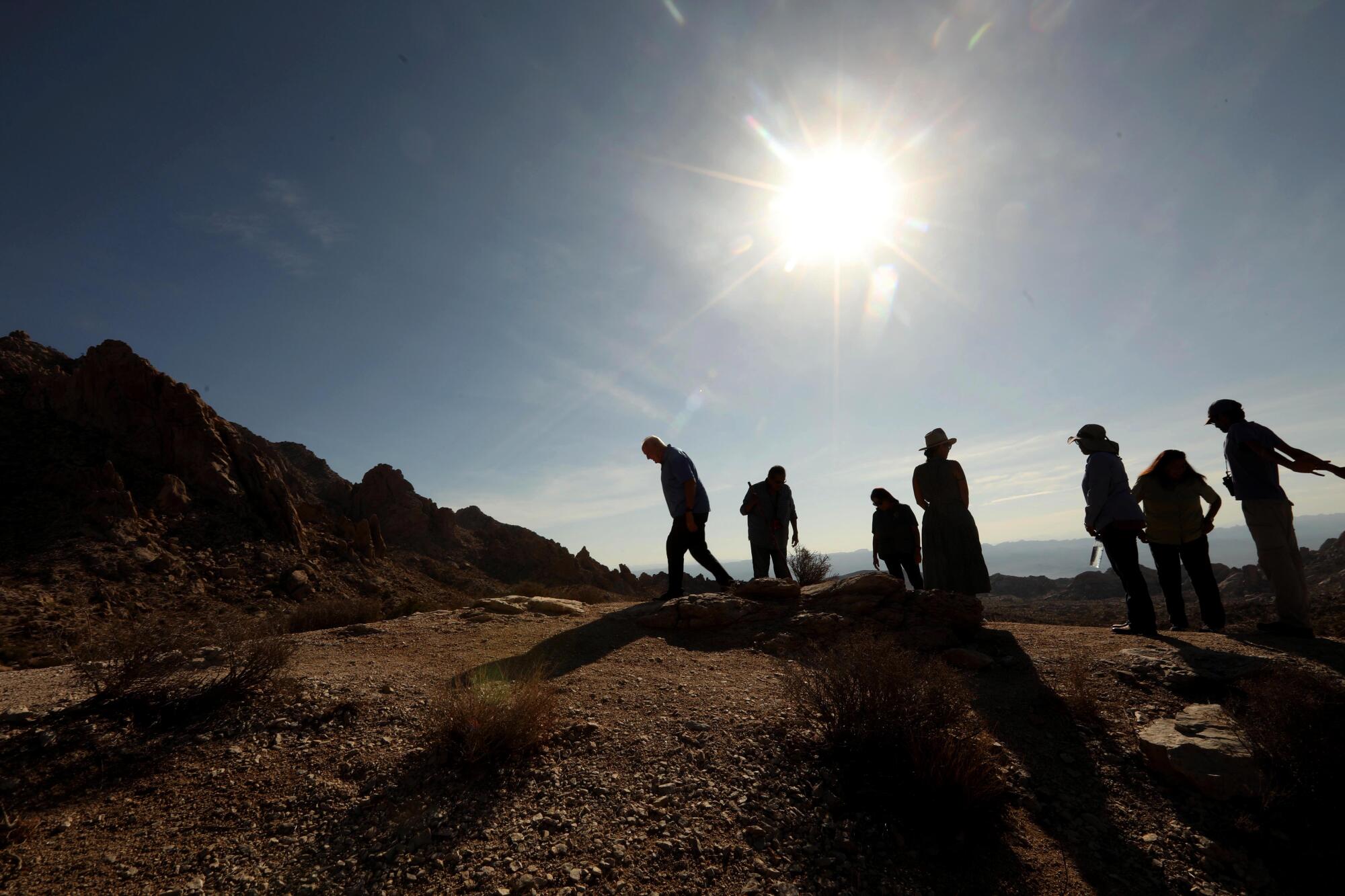
SEARCHLIGHT, Nev. — The remote mountain from which Mojave Desert tribes believe the universe unfolds rises above a corner of southwestern Nevada defined by Joshua trees, outcroppings, and fortress-like gorges that change color by the minute.
For centuries, Native Americans have made pilgrimages to the 5,600-foot-high monolith they call Avi Kwa Ame, or Spirit Mountain, to seek religious visions and give thanks for Earth’s bounty.
On a recent morning, Linda Otero, a Fort Mojave Indian Tribe leader, reached out as if to embrace the rugged wilderness just a four-hour drive from Los Angeles and said, “This is our church, given to us by our creator.”
“It gives us guidance, strength and courage,” she said, “and provides comfort and confidence to our younger generations moving forward in the modern world.”
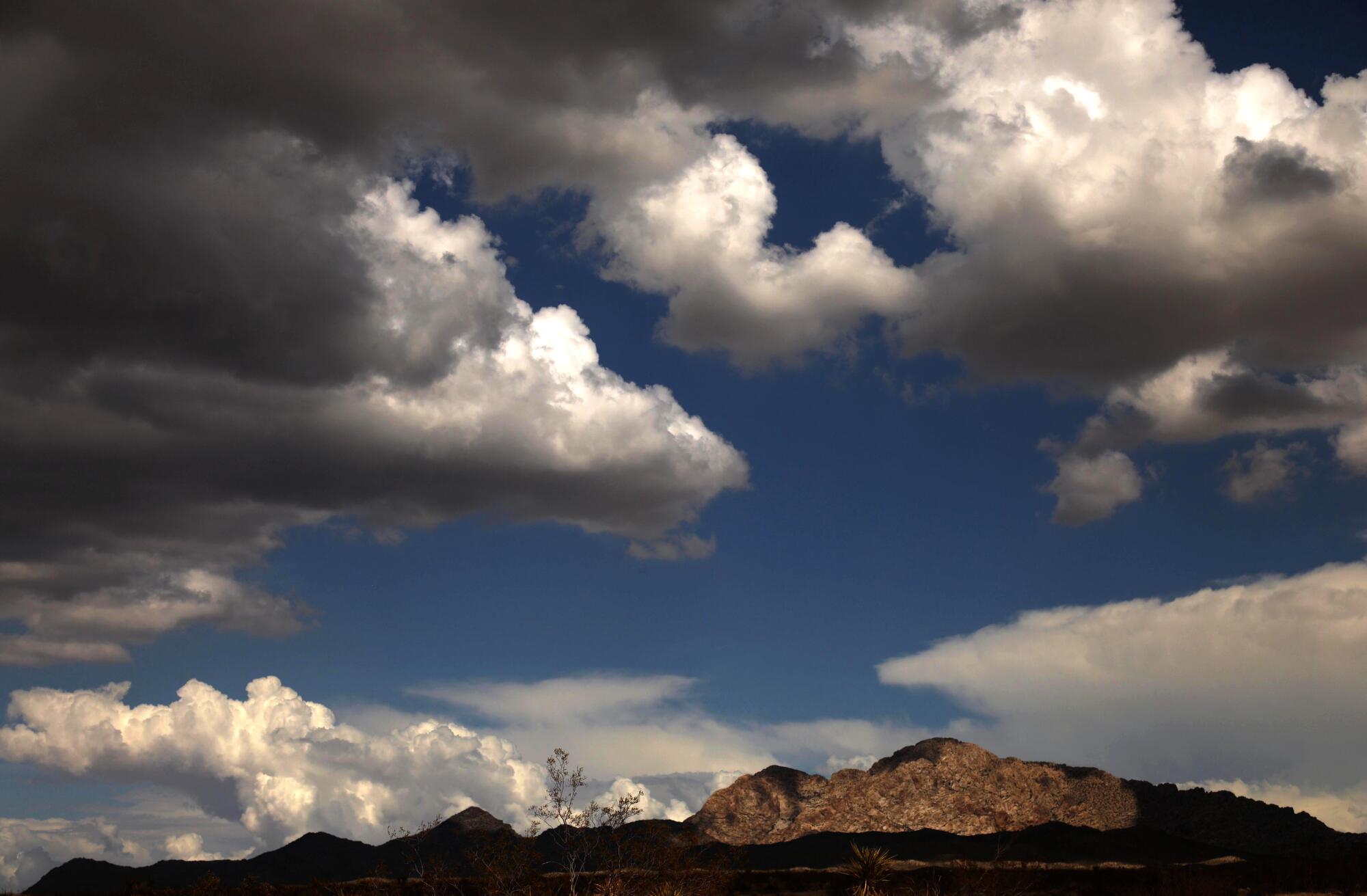
But in recent years, U.S. Route 95, a vital backbone for Nevada through Las Vegas, about 50 miles to the north, has made it a relatively easy excursion for others — tourists, outdoor adventurers, off-roaders, New Agers and alternative energy developers.
Now, an eclectic coalition of Native Americans, artists, biologists and environmentalists has stepped in with a proposal to have the mountain and more than 443,000 acres that surround it designated Avi Kwa Ame National Monument.
The effort comes at a time when the Biden administration has pledged to safeguard Indigenous, cultural and environmental sites under its “America the Beautiful” initiative, which seeks to conserve and connect 30% of the nation’s lands and waters by 2030.
The entire area within the proposal is considered sacred by more than a dozen tribes, and the eastern face of the mountain in 1999 was listed on the National Register of Historic Places in recognition of its religious and cultural importance.
Roughly 40 miles of the monument hugs the Southern California border.
The diverse terrain of overlapping biological zones including native grasslands, Joshua tree forests, natural springs, canyonlands and boulder fields creates habitat for Gila monsters and some of the highest densities of bighorn sheep, desert tortoises and golden eagles in Nevada.
Scientists continue to find and catalogue plants and creatures that have become uniquely adapted to this sun-scorched biological frontier.
For example, Michael Webber, 38, a biologist at the College of Southern Nevada and expert on rattlesnakes, said that she is studying a newly discovered inch-long scorpion that appears to have genetically adapted to the volcanic terrain.
Congresswoman Dina Titus (D-Nev.) earlier this year introduced a bill to establish Avi Kwa Ame National Monument. Meanwhile, supporters have been meeting with federal officials in Washington to promote the effort.
Otero said she has high hopes that President Biden will soon designate the area as a new monument.
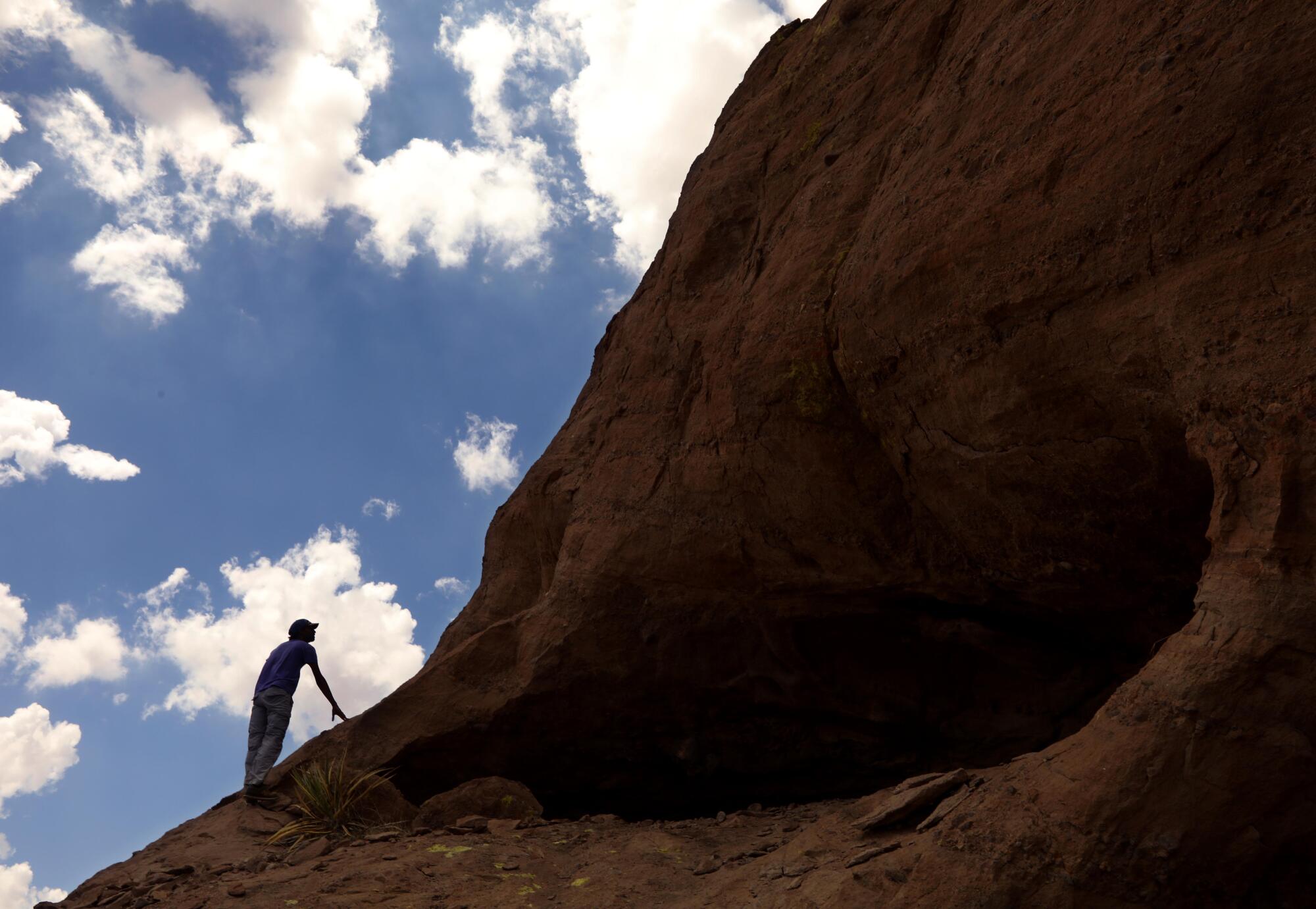
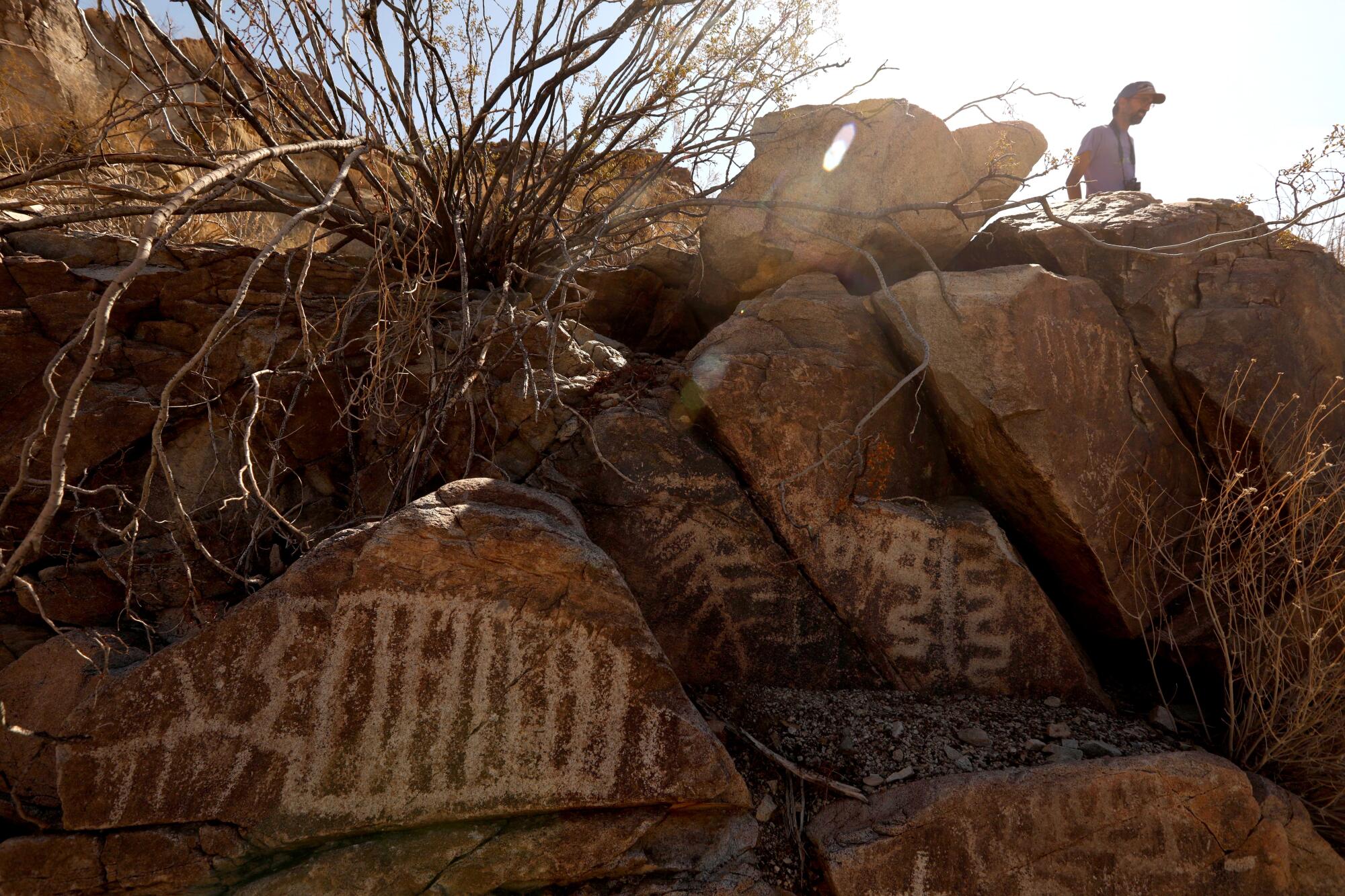
The proposed monument would consist of 443,671 acres of public lands connecting Mojave National Preserve, Castle Mountains National Monument, Mojave Trails National Monument and Dead Mountain Wilderness Area in California with Lake Mead National Recreation Area in Nevada.
Of particular concern are 62,371 acres within the proposed monument boundary that have no special protective designations and are vulnerable to mining operations and large-scale wind and solar energy projects.
A year ago, the Bureau of Land Management dealt a significant blow to Crescent Peak Renewables LLC, the American subsidiary of Sweden-based Eolus Vind AB, which wants to build a wind farm on 9,100 acres within the proposed monument’s boundaries.
The BLM’s Las Vegas office gave the proposed Kulning Wind Energy Project a “low priority” status — a classification indicating that it is unlikely to be authorized.
Proponents of the monument said they do not oppose renewable energy development, but that they will fight land use decisions that would cause serious and irreparable damage to areas considered sacred to Indians.
“This is an ancient place that is still very much alive,” said Paul Jackson, an artist and spokesman for the Fort Mojave Indian Tribe. “This is who we are.”
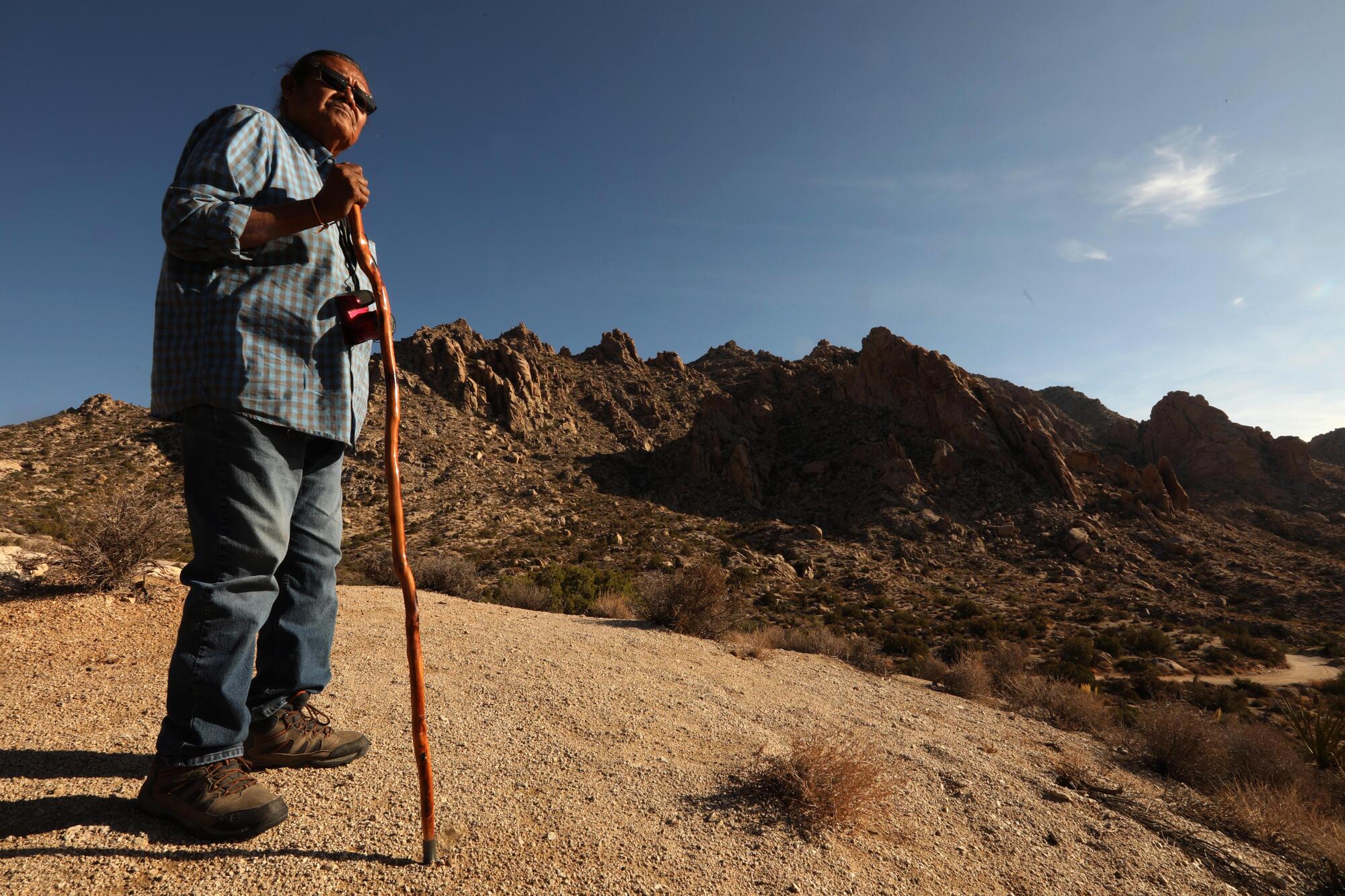
Jackson is among the descendants of the region’s first settlers. Here, his ancestors and those of other tribes adapted to life in the hostile desert wilderness, and developed a special relationship with the mountain.
The Mojave, Hopi and Chemehuevi Southern Paiutes still sing ancient songs that help the spirits of deceased loved ones navigate the landscape by describing springs, rivers, rock outcroppings, dusty arroyos and mountain peaks that exist in both the natural and supernatural worlds.
Like the ancients, they also commune with the divine in sacred spaces that for them are gateways to spiritual awakenings.
Judging from tribal stories and archaeological findings, the ancients were ingenious in their ability to survive in this parched desert landscape.
They built small igloo-shaped shelters from the twigs of creosote bushes, held in place by rocks surrounding the structure’s base. They chipped tools and weapons out of volcanic glass.
Grinding stones more than 7,500 years old suggest a culture that had begun processing plants for food and medicinal purposes.
The people collected rainwater in the depressions of boulders, then protected it from animals and evaporation by placing smaller rocks on the boulders as a kind of lid.
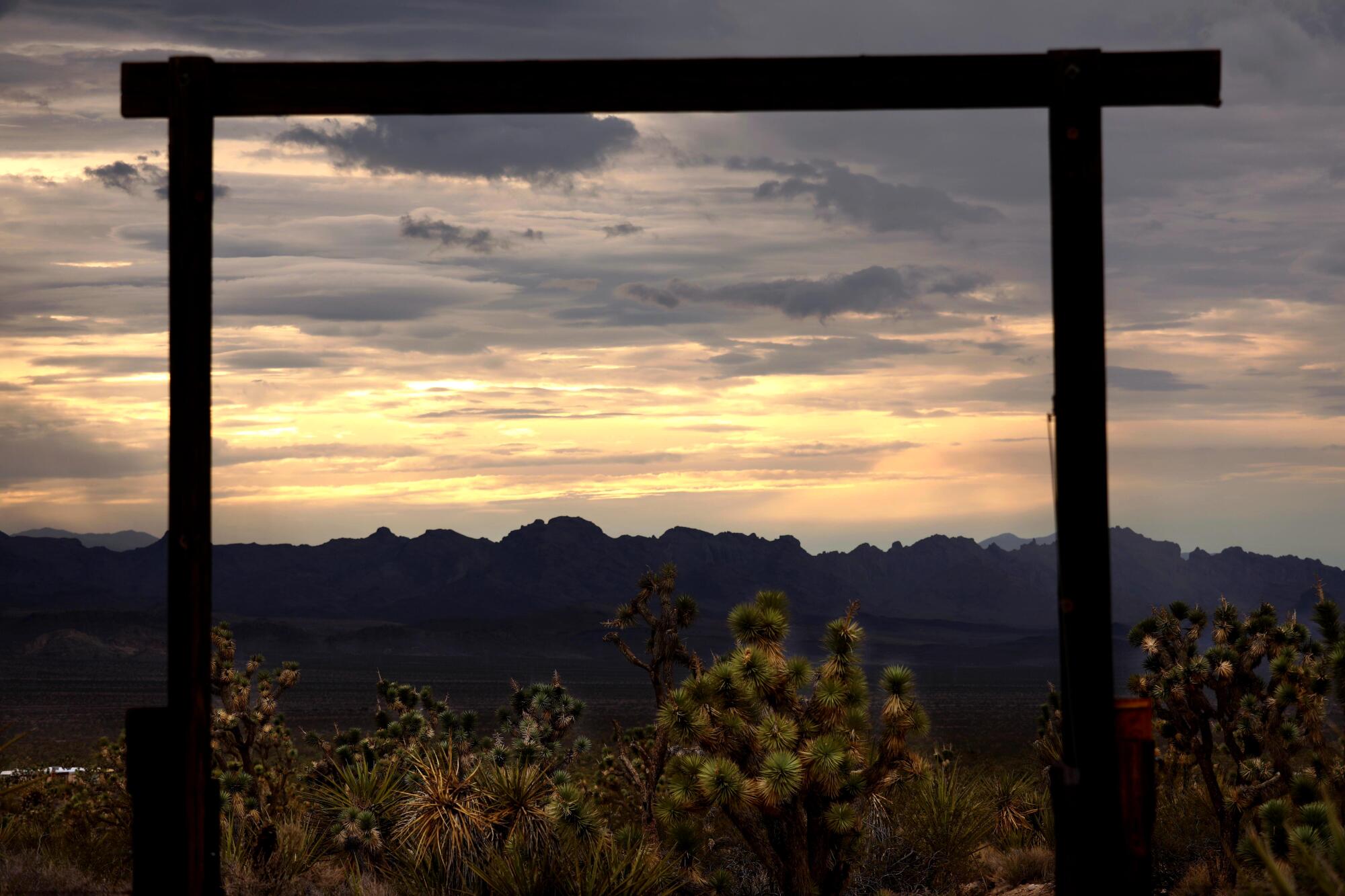
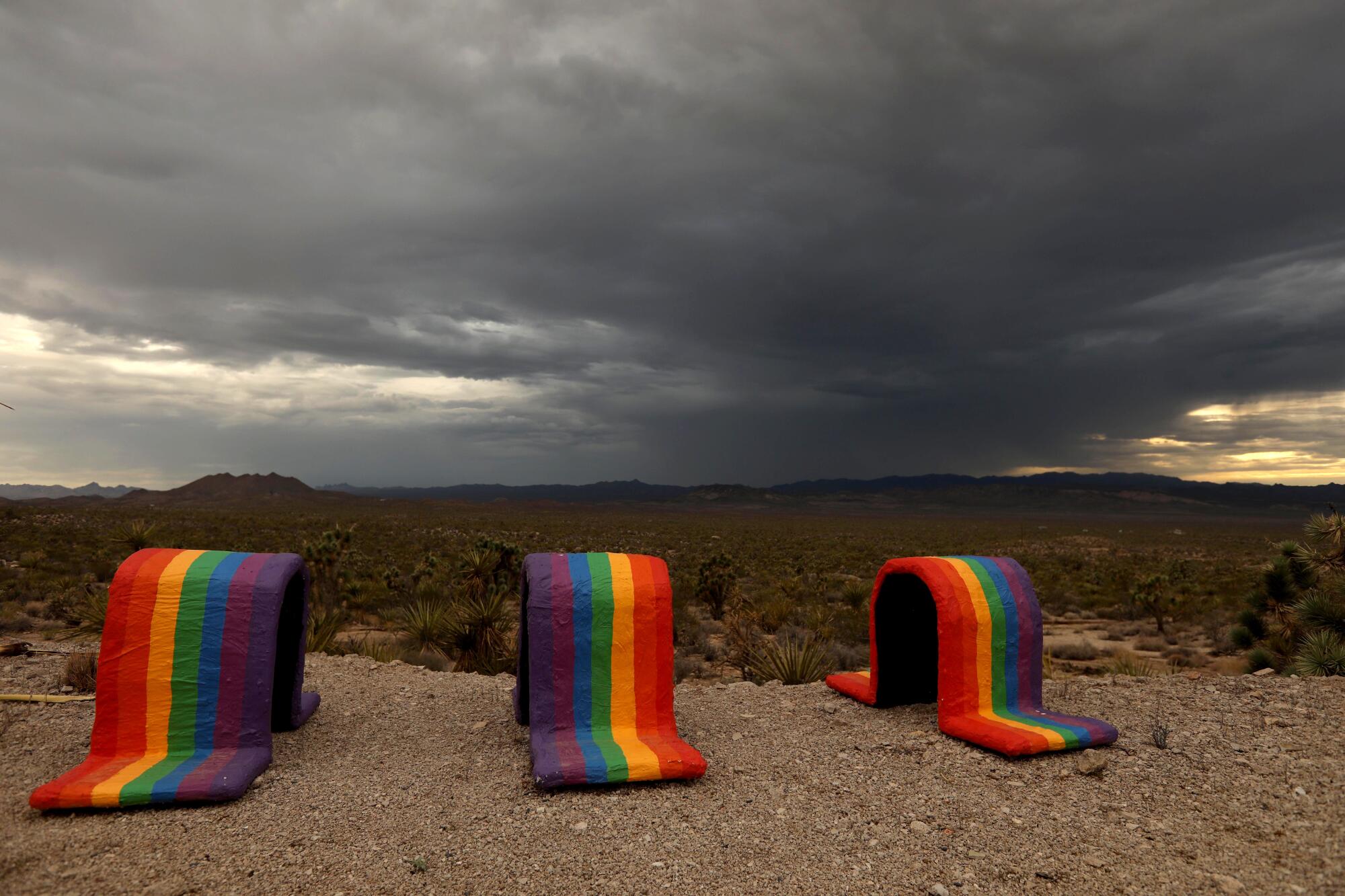
The prehistoric people who resided in this desert were also constantly on the move along the Mojave and Colorado rivers, archaeologists say, sometimes traveling as much as 200 miles a year in search of food.
Over the past century, the sacred grounds became a cultural crossroads of competing interests: mines, ranches, gambling casinos, military exercises, transportation corridors and housing developments for urban refugees.
Preservationists believe that Spirit Mountain and its environs could be a draw to the nearby historic mining and ranching towns of Searchlight, Laughlin and Boulder City, making them stewards of the ecosystem and a local ecotourism economy.
“We see a renaissance for our old town,” said Kim Garrison Means, an artist and third-generation Searchlight resident who operates the Mystery Ranch, which hosts artists and scientists who visit the proposed monument area.
In the meantime, Means is creating intricate museum-quality renderings of what she describes as the “astonishing beauty and symmetry of desert botanical species” from lupine to catclaw acacia, along with possible Spirit Mountain souvenirs: T-shirts, postcards, coffee mugs and shot glasses.
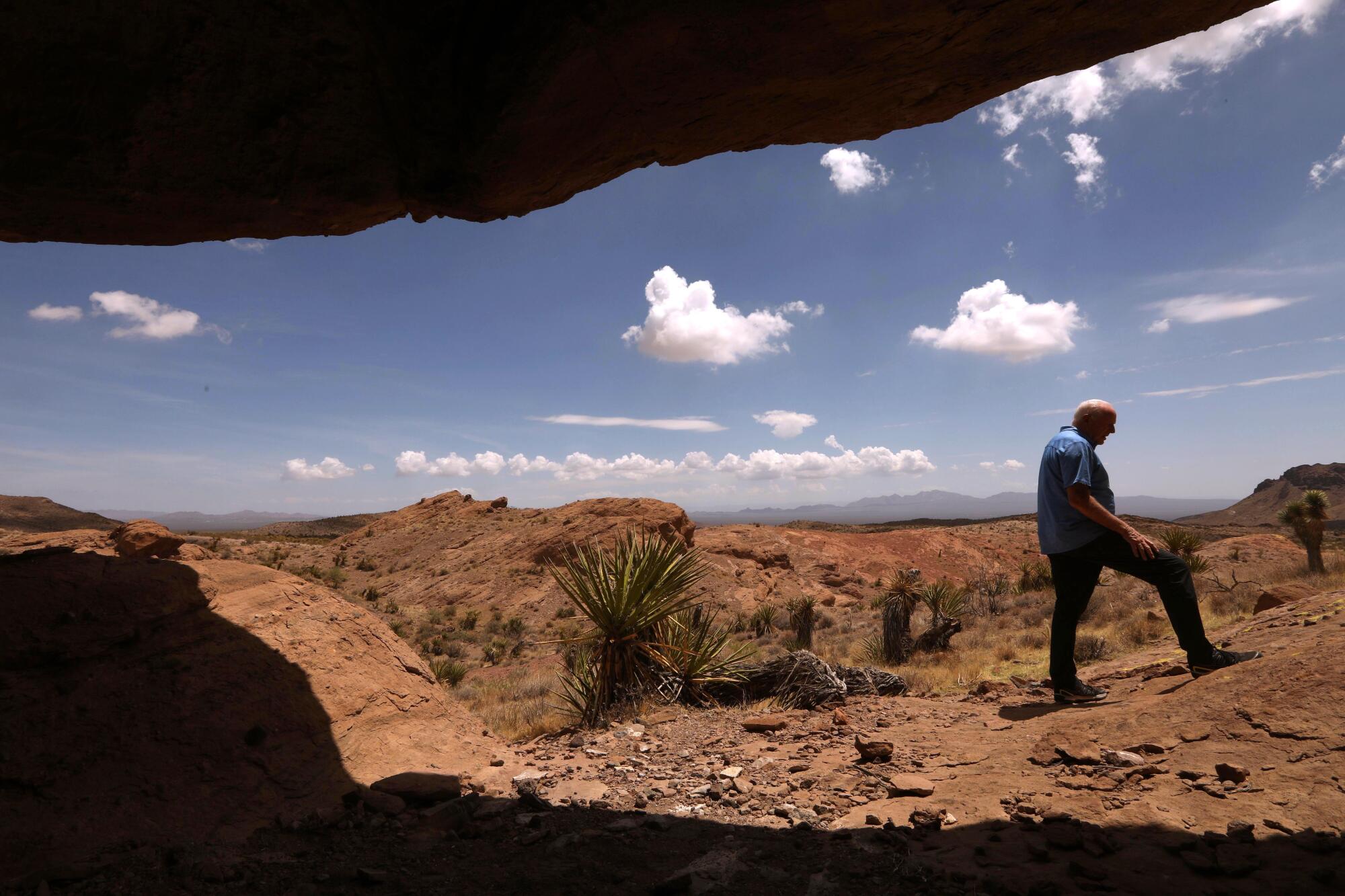
When Alan O’Neill, 80, wants to introduce people to his favorite mountain, he leads caravans of four-wheel-drive vehicles across some of the West’s most picturesque desert scenery, yet also some of its most remote and formidable terrain.
O’Neill, a former superintendent of Lake Mead National Recreation Area, moved to the region in the 1980s and knows the territory where politics, recreation, development, tribal concerns and the environment converge.
He sees his calling as finding common ground among stakeholders and protecting a quality of life that has been paved over elsewhere.
A recent trip over dirt roads so washboarded that some 5 mph stretches seemed breakneck gave a group traveling with O’Neill the chance to experience the desert the way the Indians, stagecoach passengers and ranchers saw it in the 19th century.
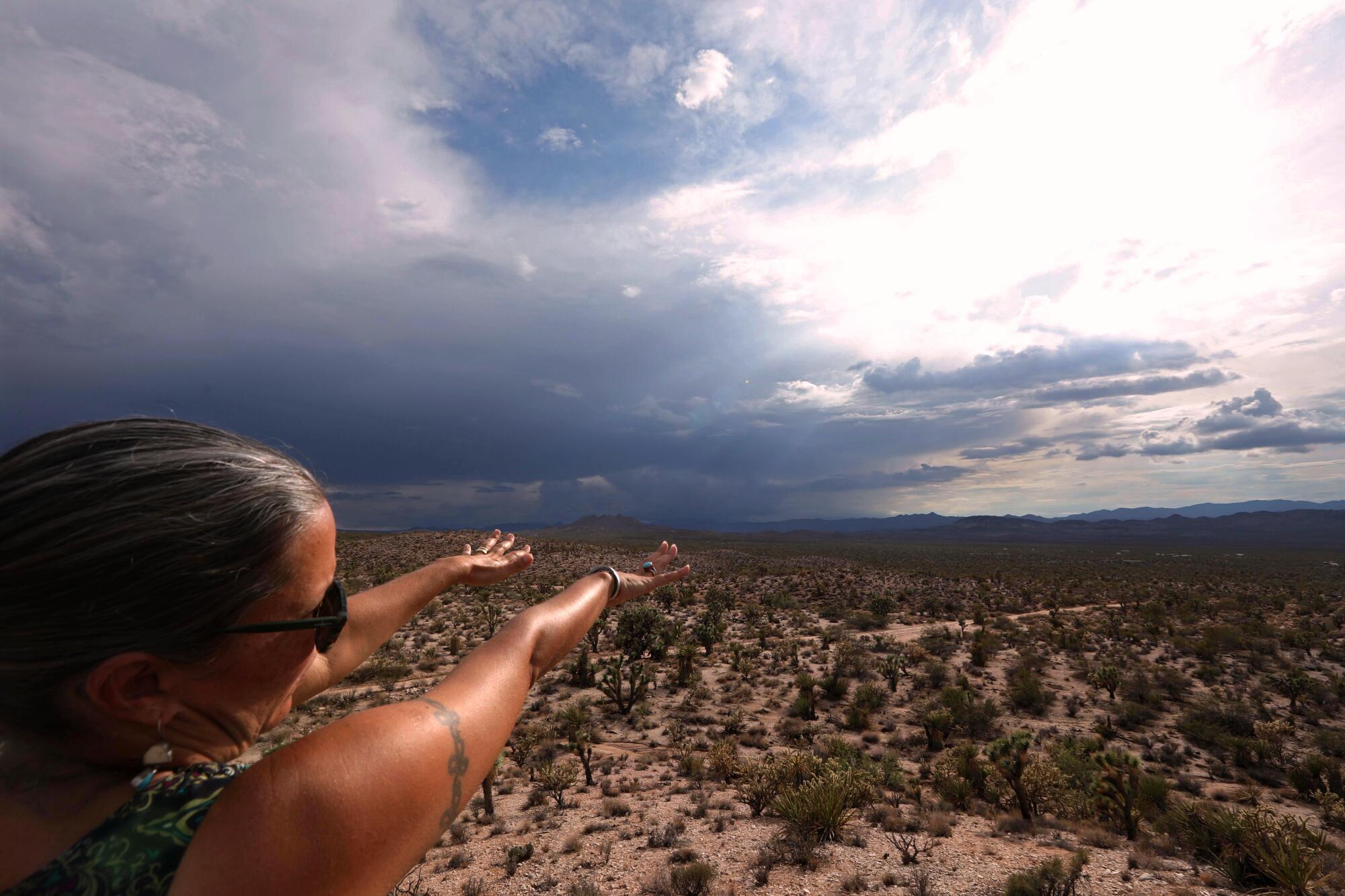
Bringing his vehicle to an abrupt stop after wiggling along rocky roads for nearly an hour, O’Neill said, “Follow me. I want to show you something special.”
Moments later, he was striding toward a dusty gash in a mammoth outcropping jutting upward from the sand and sage.
“We’re standing in a sacred place,” he said, marveling at the ochre, white and gray images that were painted on the inside walls hundreds — perhaps thousands — of years ago by some of the first humans to inhabit the Mojave Desert.
“There is a power in this land that’s hard to put your finger on,” he said, gazing out at Spirit Mountain, about 25 miles to the east, “and it’s changed me forever.”
